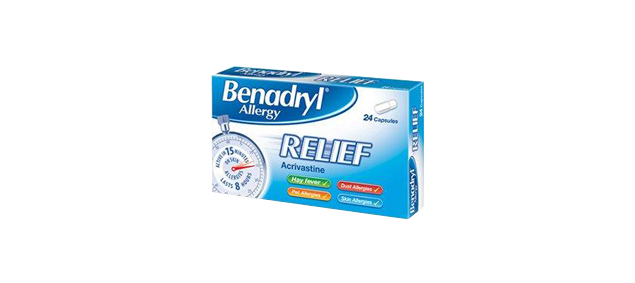Understanding and Managing Pet Allergies
Our beloved pets often feel like members of the family, but sometimes, they can trigger allergies among certain people. But what is it about our pets that can cause these allergies?
An allergy is where your body reacts to something that’s normally harmless – in this case, your pet1. Though it’s commonly believed that their fur is the likely culprit, the allergens that pets produce are present in their urine, saliva, and dander. So, it’s not their fur that triggers allergy symptoms, but rather the saliva on their fur from self-grooming. Once the saliva dries, it becomes airborne very easily.
While avoiding pets is the best way to manage your allergies, there are ways to help reduce and treat your pet allergy symptoms.
Here, we’ll explain what pet dander is, the common symptoms it can cause, and how to deal with it. We’ll also explore the different treatments available for pet allergies.
In this guide:
What is pet dander?
Pet dander refers to the dead skin cells2 that flake off regularly during your pet’s grooming and natural shedding process. These can then become airborne and settle on surfaces in the home2.
This dander is one of the main causes of pet allergies2. It’s composed of skin particles which contain proteins that can cause an allergic reaction2.
Pet allergy symptoms
Cats and dogs often get most of the blame for pet allergies. But they’re not the only animals that can cause pet allergy symptoms. The fur of any animal can result in an allergic reaction3. While this typically includes cats and dogs, rodents and rabbits, horses, and even birds can also trigger them3.
Usually, if you’re allergic to your pet, you’ll notice symptoms straight away. However, sometimes they may not develop for a few days3.
Common pet allergy symptoms to look out for include3:
A tight chest, wheezing, and/or difficulty breathing
Coughing, sneezing, and congestion
A runny nose
Watering and itchy feeling eyes
Swelling below the eyes
Hives (patches of raised, red skin)
A rash on the skin
A flare-up of eczema.
Tips to prevent pet allergies
Whilst steering clear of pets may be the safest bet, that isn’t always possible. So, here are some practical tips to help you keep allergens to a minimum to manage your pet allergy symptoms:
Regularly wipe down and groom your pet
Regularly wipe down your pet to remove any saliva that’s on their fur from self-grooming. Wipe them down whenever they re-enter the home to remove outdoor pollen from their coat, too.
Bathe your pet at least once a week to help get rid of dander3. A frequent grooming routine – preferably performed by someone other than yourself – can also help reduce allergens on their coat.
Keep your bedroom door shut
Keep your pets out of the bedroom. This will limit your exposure to airborne allergens such as dander. Giving them their own area to eat and sleep, away from bedrooms and living rooms, could be a good solution.
When it comes to sleeping, consider using synthetic pillows, as ones made with feathers could make your symptoms worse3.
Get the vacuum out
Paying extra attention to vacuuming the car, furniture, and especially your pet’s bed can help keep allergens lower.
Keep the air clean
Using an air purifier inside your home can help reduce indoor airborne allergens2. You may need to leave it running all day, but this can get rid of those pesky allergens in the air3.
Prevent pet dander from building up
Get rid of any clutter, swap carpets for wooden floors, and use plastic blinds instead of fabric curtains to prevent pet dander from lingering in your home3.
Wash your hands
Wash your hands with soap and water after touching your pet. Also, try to avoid the temptation to hug and kiss your pet3.
Treatment for pet allergies
While preventative measures and practical tips may help alleviate pet allergy symptoms, sometimes, you may need symptomatic treatment.
Medication for pet allergies
Medication for pet allergies often include antihistamines1. Some antihistamines are only available on prescription, but most can be purchased from shops and pharmacies4.
These include:
Capsules - BENADRYL® Allergy Relief is the fastest acting allergy relief capsule*. It contains acrivastine, a unique ingredient that gets to work in just 15 minutes. It can be taken up to three times per day, as required.
Liquid medicine - A suitable option to help relieve pet allergies in children, BENADRYL® for Children Allergy Solution is designed to provide long-lasting relief from dust, pet, and skin allergies, as well as hay fever. The product is available over the counter for children aged 6+.
Nasal sprays - BENADRYL® Natural Relief Nasal Spray helps to wash away irritants and minimise symptoms associated with allergens, such as a runny and/or blocked nose.
*To verify, contact 0808 2389999
Pet allergies FAQs
Pet allergy symptoms usually continue for as long as you’re around an allergen. Once you’re no longer near the allergen, your symptoms should ease within a few hours5. If your symptoms persist for longer than two weeks, you should see a doctor3.
Yes, using an air purifier can help to reduce airborne allergens2. However, airborne allergens aren’t the only irritants present within your home6. Pet dander can also collect on furniture and other surfaces2. Therefore, you should also vacuum regularly, change your bedding frequently, and ensure pets are kept away from your sleeping area to help manage your symptoms6.
Although it may be best to avoid living with pets if you have an allergy, if you can’t bear the thought of giving up your beloved four-legged friend, there are several things you can do to help keep your symptoms in check. These include, keeping pets out of your bedroom and washing your hands after petting them. Keeping your home clean and vacuuming regularly can also help to get rid of any allergy-triggering pet dander3.

Want allergy relief?
Take the quiz to find the right product to help treat your allergy symptoms.
